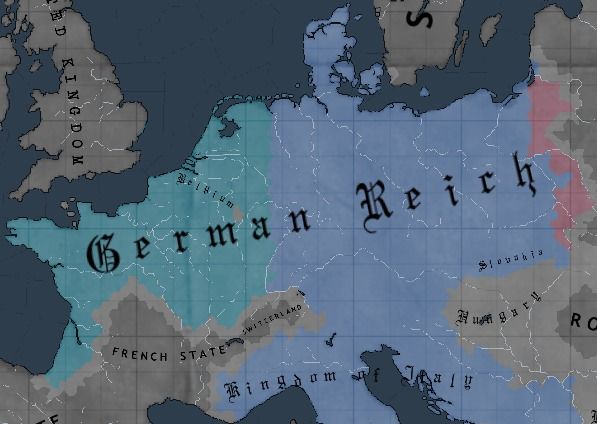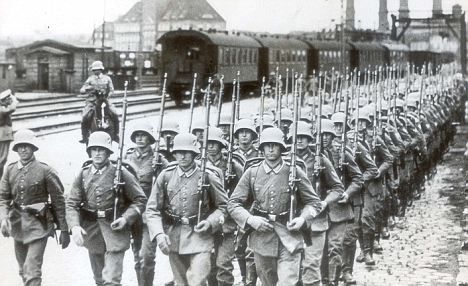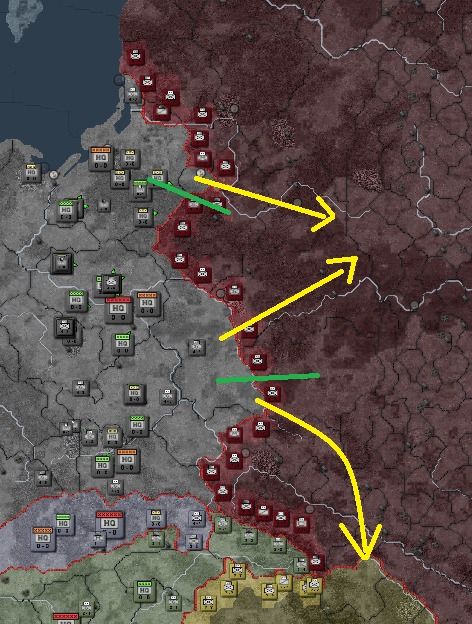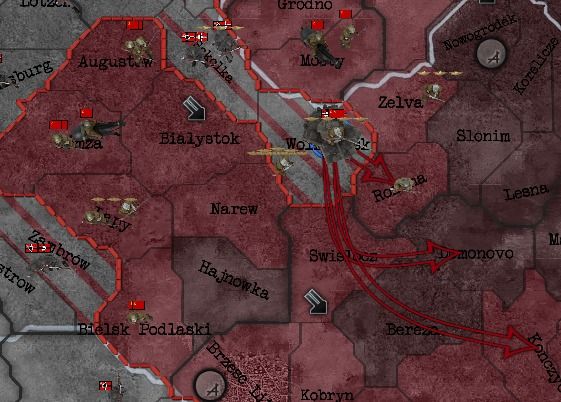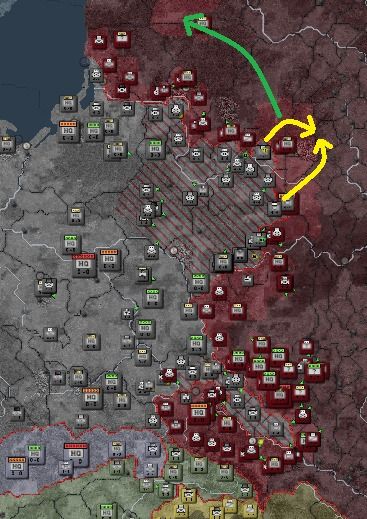Sideshows
On 20 March, war was declared on Denmark. The operation was deemed vital, in light of the experience in the Netherlands, to secure our northern border so that it could – on the whole – not be threatened by the Royal Navy. During the early hours of the day, tanks and grenadiers of Panzer Group 1 rolled across the border engaging the Danish border garrisons. The following morning paratroopers seized landing grounds outside the capital, to allow the fly in of the entire Airborne Corps. With the Danish main army outflanked, their border guards under intense pressure and their capital threatened, the Danish government made the right choice and surrendered. The country was annexed and a pro-German collaborationist government installed to appease the people and not risk uprising. Garrison forces then moved in to secure the capital and major ports.

During April, along the Western Front, the Royal Air Force launched a number of air raids. These incursions were met by overwhelming numbers of Bf 110s, resulting in 120 heavy bombers being shot down. The air fighting concluded with our twin-engine fighters being lured into a battle over Dover. The Luftwaffe, based in France, had been given strict instructions not to engage in battles over the United Kingdom, but rather defend Gaul and intercept bombing raids. In the past our twin-engine fighters had fared poorly when facing the RAF, but in this engagement shot down 80 fighters for the loss of only 40 planes. At the same time, and some within OBWest thought interconnected, a number of mass strikes took place across France resulting in the arrest of 18,000 Frenchmen.
On 23 May, the USSR once again started the demobilisation process of her forces. The next day, reports suggested that mobilisation was again underway. In twelve months, this is at least the third time this process of rapid mobilisation and demobilisation has occured. With the USSR once again mobilising her forces, OKH ordered Army Groups North, Centre, and South to mass on the German-USSR border.
In Africa, things were going from bad to worse for the Italians. The British, from the looks of things, had managed to gather her strength (although our intelligence department believed she was relaying mostly on Dominion and Imperial troops) and greatly reinforced her forces in Africa (possibly the end location of the heavily guarded convoy our cruisers attacked earlier). This had resulted in the Italian advance being halted in East Africa, and in places repelled. The likely outcome for the Italians would be the loss of their 160,000-strong army. In North Africa, British troops had replaced the Jordanian and Egyptian forces previously seen. These regulars had, in just two months, overrun most of Cyrenaica. Although, it appeared that the Italian force had managed to conduct a withdrawal without heavy losses. With over half a million Italian troops now idle in the Balkans, it seems logical they will soon reinforce Africa. As for a German relief mission, this is out of the question. The Italians will not loan us their transports, and the Kriegsmarine lacks the strength to force their way into the Mediterranean with transports to move troops to Africa. At any rate, what would be the point as there are bigger objectives in mind for OKW.
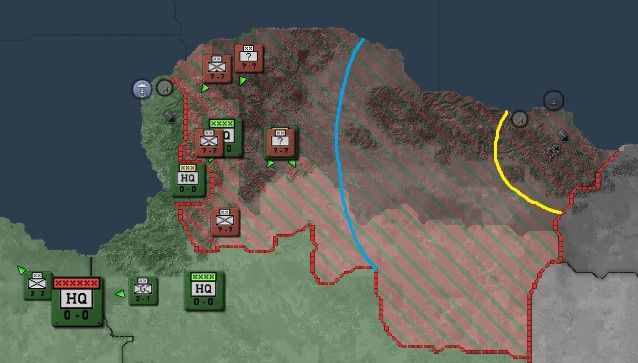
Frontline 19 May. Legend:
Blue: 9 May
Yellow: 15 April
On 20 March, war was declared on Denmark. The operation was deemed vital, in light of the experience in the Netherlands, to secure our northern border so that it could – on the whole – not be threatened by the Royal Navy. During the early hours of the day, tanks and grenadiers of Panzer Group 1 rolled across the border engaging the Danish border garrisons. The following morning paratroopers seized landing grounds outside the capital, to allow the fly in of the entire Airborne Corps. With the Danish main army outflanked, their border guards under intense pressure and their capital threatened, the Danish government made the right choice and surrendered. The country was annexed and a pro-German collaborationist government installed to appease the people and not risk uprising. Garrison forces then moved in to secure the capital and major ports.

During April, along the Western Front, the Royal Air Force launched a number of air raids. These incursions were met by overwhelming numbers of Bf 110s, resulting in 120 heavy bombers being shot down. The air fighting concluded with our twin-engine fighters being lured into a battle over Dover. The Luftwaffe, based in France, had been given strict instructions not to engage in battles over the United Kingdom, but rather defend Gaul and intercept bombing raids. In the past our twin-engine fighters had fared poorly when facing the RAF, but in this engagement shot down 80 fighters for the loss of only 40 planes. At the same time, and some within OBWest thought interconnected, a number of mass strikes took place across France resulting in the arrest of 18,000 Frenchmen.
On 23 May, the USSR once again started the demobilisation process of her forces. The next day, reports suggested that mobilisation was again underway. In twelve months, this is at least the third time this process of rapid mobilisation and demobilisation has occured. With the USSR once again mobilising her forces, OKH ordered Army Groups North, Centre, and South to mass on the German-USSR border.
In Africa, things were going from bad to worse for the Italians. The British, from the looks of things, had managed to gather her strength (although our intelligence department believed she was relaying mostly on Dominion and Imperial troops) and greatly reinforced her forces in Africa (possibly the end location of the heavily guarded convoy our cruisers attacked earlier). This had resulted in the Italian advance being halted in East Africa, and in places repelled. The likely outcome for the Italians would be the loss of their 160,000-strong army. In North Africa, British troops had replaced the Jordanian and Egyptian forces previously seen. These regulars had, in just two months, overrun most of Cyrenaica. Although, it appeared that the Italian force had managed to conduct a withdrawal without heavy losses. With over half a million Italian troops now idle in the Balkans, it seems logical they will soon reinforce Africa. As for a German relief mission, this is out of the question. The Italians will not loan us their transports, and the Kriegsmarine lacks the strength to force their way into the Mediterranean with transports to move troops to Africa. At any rate, what would be the point as there are bigger objectives in mind for OKW.

Frontline 19 May. Legend:
Blue: 9 May
Yellow: 15 April
Last edited:


